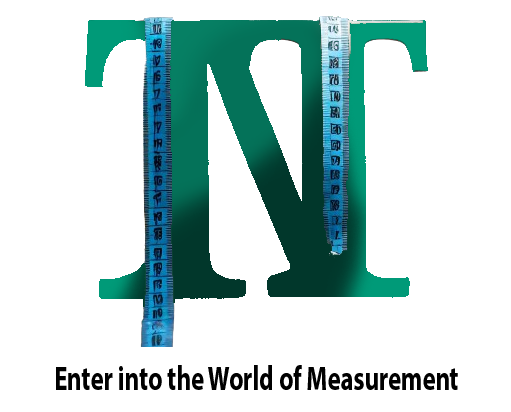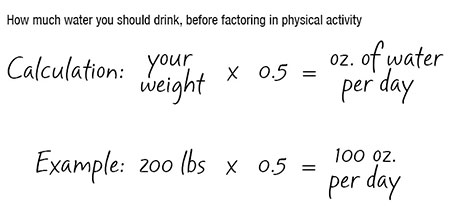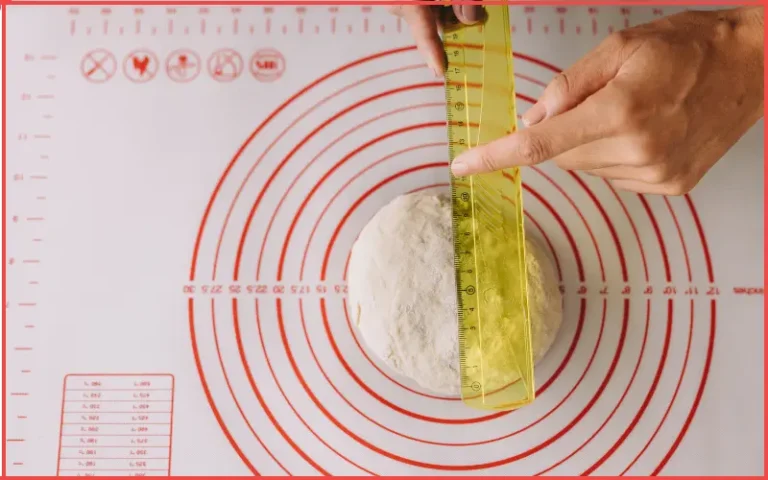The Golden Ratio: A Complete Guide to Nature’s Most Perfect Number
The golden ratio stands as one of the most fascinating mathematical concepts in human history, weaving its influence through art, architecture, nature, and human perception. This divine proportion, approximately equal to 1.618, has captivated mathematicians, artists, and scientists for millennia. But what exactly is the golden ratio, and why does it appear so frequently in the world around us?
What is the Golden Ratio? Understanding the Fundamental Definition
The golden ratio, often represented by the Greek letter phi (φ), is a mathematical constant that occurs when a line is divided into two parts such that the longer part divided by the smaller part equals the whole length divided by the longer part. In mathematical terms, this relationship can be expressed as (a+b)/a = a/b = φ ≈ 1.618033988749…
This golden ratio number is an irrational number, meaning its decimal representation continues infinitely without repeating. The exact mathematical formula for calculating the golden ratio is (1 + √5)/2, which gives us the precise value that has fascinated humanity for thousands of years.
The golden ratio symbol φ (phi) was named after the ancient Greek sculptor Phidias, who allegedly used this proportion in his works. However, the symbol itself wasn’t adopted until much later in mathematical history, becoming the standard representation we recognize today.
The Rich History of the Golden Ratio: From Ancient Civilizations to Modern Times
Ancient Origins and Early Discoveries
What is the history of golden ratio? The story begins in ancient Egypt, where evidence suggests that the Great Pyramid of Giza incorporates golden ratio proportions in its design. The ratio of the pyramid’s height to half its base length closely approximates the golden ratio, though historians debate whether this was intentional or coincidental.
The ancient Greeks made the first formal mathematical study of this proportion. Euclid, around 300 BCE, described what he called the “extreme and mean ratio” in his mathematical treatise “Elements.” This work provided one of the earliest systematic approaches to understanding the mathematical properties of what we now call the golden ratio.
Renaissance Rediscovery
During the Renaissance, mathematician Luca Pacioli wrote “De Divina Proportione” (The Divine Proportion) in 1509, with illustrations by Leonardo da Vinci. This work brought renewed attention to the golden ratio and its applications in art and architecture. Da Vinci’s famous drawing “Vitruvian Man” demonstrates his understanding of proportional relationships, though not specifically the golden ratio.
Modern Mathematical Understanding
The term “golden ratio” itself is relatively modern, coined in the 19th century. German mathematician Martin Ohm is credited with first using “goldener Schnitt” (golden section) in 1835. The mathematical symbol φ (phi) was introduced by American mathematician Mark Barr in the early 1900s, honoring the Greek sculptor Phidias.
The Golden Ratio in Mathematics: Properties and Calculations
Mathematical Properties
The golden ratio possesses unique mathematical properties that make it extraordinary:
- Self-similarity: φ² = φ + 1
- Reciprocal relationship: 1/φ = φ – 1
- Continued fraction: φ = 1 + 1/(1 + 1/(1 + 1/…))
- Connection to Fibonacci sequence: The ratio of consecutive Fibonacci numbers approaches φ
Golden Ratio Calculator Methods
How is golden ratio made mathematically? Several methods exist for calculating this divine proportion:
Method 1: Basic Formula φ = (1 + √5)/2 ≈ 1.618033988749…
Method 2: Using Fibonacci Numbers Take any two consecutive Fibonacci numbers and divide the larger by the smaller. As the numbers get larger, this ratio approaches the golden ratio.
Method 3: Geometric Construction Using compass and straightedge, you can construct the golden ratio geometically by creating a golden rectangle through specific geometric procedures.
The Golden Rectangle and Its Significance
A golden rectangle is a rectangle whose side lengths are in the golden ratio proportion. When you remove a square from a golden rectangle, the remaining rectangle is also a golden rectangle, demonstrating the self-similar property of this remarkable ratio.
The construction of a golden rectangle involves:
- Starting with a square
- Finding the midpoint of one side
- Drawing a line from that midpoint to the opposite corner
- Using this length to extend the rectangle
This geometric relationship creates a rectangle that is aesthetically pleasing to the human eye and forms the basis for many architectural and artistic designs.
The Golden Ratio in Nature: Divine Proportions Everywhere
Plant Kingdom and Botanical Patterns
Golden ratio in nature manifests most prominently in plant structures. The spiral patterns of pinecones, sunflower seed heads, and nautilus shells follow golden ratio proportions. This occurs because the golden ratio provides the most efficient packing arrangement for seeds and growth patterns.
Flower petals often occur in Fibonacci numbers (which relate to the golden ratio): lilies have 3 petals, buttercups have 5, delphiniums have 8, and daisies typically have 34, 55, or 89 petals. These numbers are all part of the Fibonacci sequence, which converges to the golden ratio.
Animal Kingdom Examples
Many animals display golden ratio in nature through their body proportions:
- Dolphin bodies exhibit golden ratio proportions in their length-to-width relationships
- Butterfly wings often show golden ratio symmetry
- Honeybee family trees follow Fibonacci patterns related to the golden ratio
- Spiral shells like the nautilus grow according to golden ratio spirals
Geological and Astronomical Occurrences
The golden ratio appears in geological formations, from the spiral patterns of galaxies to the proportions of natural crystals. Even weather patterns, such as hurricane spirals, often approximate golden ratio curves.
The Golden Ratio in Art: Masterpieces and Aesthetic Perfection
Classical Art and Architecture
Golden ratio in art has been a guiding principle for artists throughout history. The Parthenon in Athens incorporates golden ratio proportions in its facade, creating a sense of perfect balance and harmony that continues to inspire architects today.
Renaissance masters like Leonardo da Vinci, Michelangelo, and Raphael consciously employed the golden ratio in their compositions. Da Vinci’s “The Last Supper” uses golden ratio proportions to organize the disciples into groups, while his “Mona Lisa” features facial proportions that closely approximate the golden ratio.
Modern Art and Design
Contemporary artists and designers continue to utilize the golden ratio in their work. Photographers use the “rule of thirds,” which approximates golden ratio proportions, to create more dynamic and visually appealing compositions. Graphic designers employ golden ratio grids to layout websites, logos, and printed materials.
Famous logos that incorporate golden ratio principles include:
- Apple’s logo design
- Twitter’s bird logo
- National Geographic’s yellow rectangle logo frame
- Toyota’s overlapping circles
The Golden Ratio Face: Beauty and Human Proportions
Facial Beauty Standards
Golden ratio face research suggests that faces perceived as most attractive often conform to golden ratio proportions. These include:
- The ratio of face length to face width
- The distance between eyes compared to eye width
- The proportion of upper face to lower face
- The relationship between nose width and mouth width
Scientific Studies on Facial Attractiveness
Research by plastic surgeons and psychologists has identified specific golden ratio face measurements that correlate with perceived beauty:
- Face length to face width ratio should be approximately 1.618
- The distance from hairline to eyes versus eyes to chin should follow golden ratio proportions
- Ideal nose width should be 1/φ times the mouth width
However, it’s important to note that beauty standards vary across cultures, and the golden ratio represents just one mathematical approach to understanding aesthetic preferences.
The Golden Ratio in Architecture: Building Beauty and Harmony

Ancient Architectural Marvels
The golden ratio appears in numerous ancient structures beyond the Pyramids and Parthenon. The Taj Mahal incorporates golden ratio proportions in its dome and minaret relationships. Ancient Greek temples consistently used these proportions to create buildings that feel harmonious and pleasing to the human eye.
Modern Architectural Applications
Contemporary architects continue to employ the golden ratio in their designs:
- The United Nations Secretariat Building in New York
- The CN Tower in Toronto
- Modern residential architecture often uses golden ratio proportions for room dimensions and window placements
Practical Applications: Golden Ratio Calculator and Modern Uses
Digital Tools and Calculations
Modern golden ratio calculator tools make it easy to apply these proportions in various fields:
For Designers:
- Web layout grids based on golden ratio proportions
- Typography spacing using phi-based measurements
- Color palette generation using golden ratio relationships
For Photographers:
- Compositional guides that improve upon the rule of thirds
- Aspect ratio calculations for optimal image proportions
- Focus point placement using golden ratio intersections
Business and Marketing Applications
Companies use the golden ratio in:
- Logo design and brand identity
- Product packaging proportions
- Advertisement layout and design
- Website user interface design
The Science Behind the Appeal: Why the Golden Ratio Works
Psychological Research
Studies in cognitive psychology suggest that humans find golden ratio proportions inherently pleasing. This preference appears to be cross-cultural and may have evolutionary origins related to pattern recognition and natural harmony.
Neurological Responses
Brain imaging studies show that viewing objects with golden ratio proportions activates pleasure centers in the brain. This neurological response may explain why the golden ratio appears so frequently in art, architecture, and design across different cultures and time periods.
Mathematical Relationships and Advanced Concepts

Connection to Other Mathematical Constants
The golden ratio relates to numerous other mathematical concepts:
- The Fibonacci sequence converges to φ
- The golden angle (approximately 137.5°) derives from φ
- Connections to the regular pentagon and pentagram
- Relationships with Lucas numbers and other mathematical sequences
Advanced Mathematical Properties
For mathematics enthusiasts, the golden ratio offers deep exploration opportunities:
- Its role in number theory
- Connections to continued fractions
- Applications in optimization problems
- Relationships with trigonometric functions
Criticisms and Controversies
Scientific Skepticism
Some researchers argue that the prevalence of the golden ratio in nature and art is overstated. They suggest that:
- Many “golden ratio” examples are approximate rather than exact
- Confirmation bias leads people to see the ratio where it doesn’t actually exist
- Cultural conditioning influences perception of beauty rather than mathematical ratios
Balanced Perspective
While maintaining healthy skepticism, the mathematical properties of the golden ratio remain fascinating and its applications in design and nature are well-documented. The key is distinguishing between verified occurrences and speculative interpretations.
Conclusion: The Enduring Legacy of the Golden Ratio
The golden ratio continues to captivate mathematicians, artists, designers, and scientists. Whether appearing in the spiral of a nautilus shell, the proportions of ancient architecture, or the layout of modern websites, this mathematical constant represents humanity’s ongoing quest to understand and create beauty through mathematical principles.
From its ancient origins in Egyptian pyramids to its modern applications in digital design, the golden ratio serves as a bridge between mathematics and aesthetics, science and art. Understanding this divine proportion enriches our appreciation of both natural phenomena and human creativity.
What is golden ratio ultimately? It’s more than just a number—it’s a window into the mathematical harmony that underlies our universe, a tool for creating beauty, and a testament to humanity’s ability to find order and meaning in the patterns around us. Whether you’re an artist seeking perfect proportions, a designer creating user interfaces, or simply someone curious about the mathematical mysteries of our world, the golden ratio offers endless opportunities for exploration and application.
The golden ratio symbol φ will continue to inspire future generations of mathematicians, artists, and thinkers, ensuring that this divine proportion remains relevant in our ever-evolving understanding of beauty, nature, and mathematical truth.







